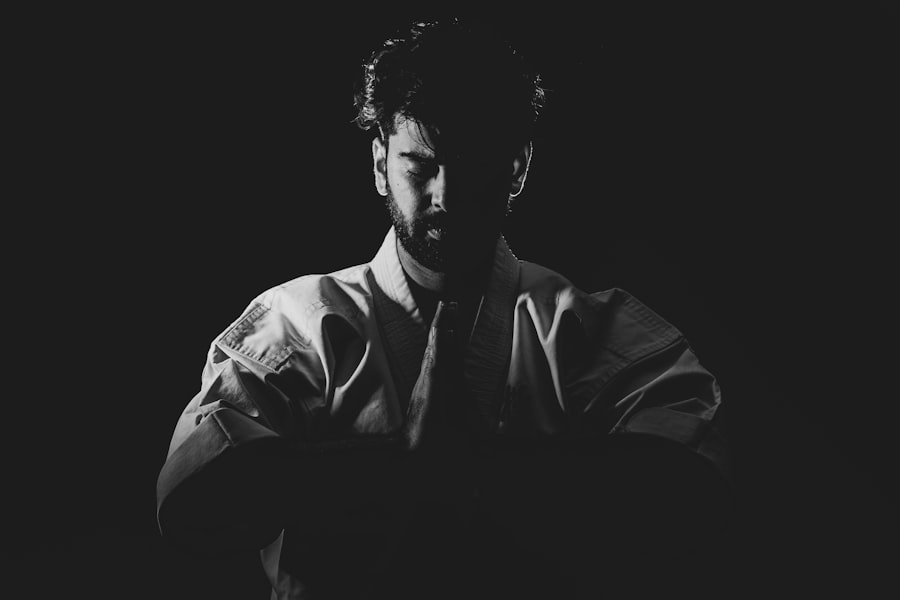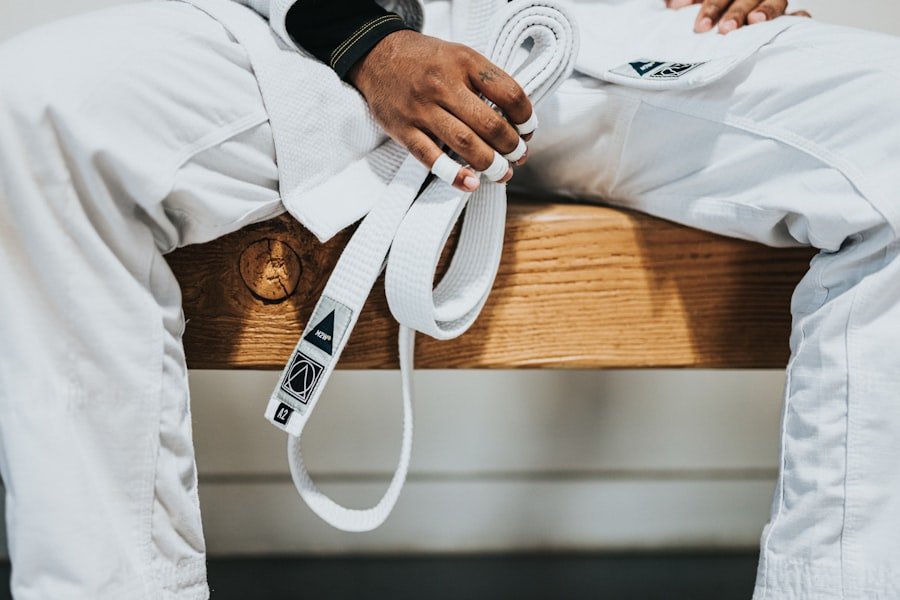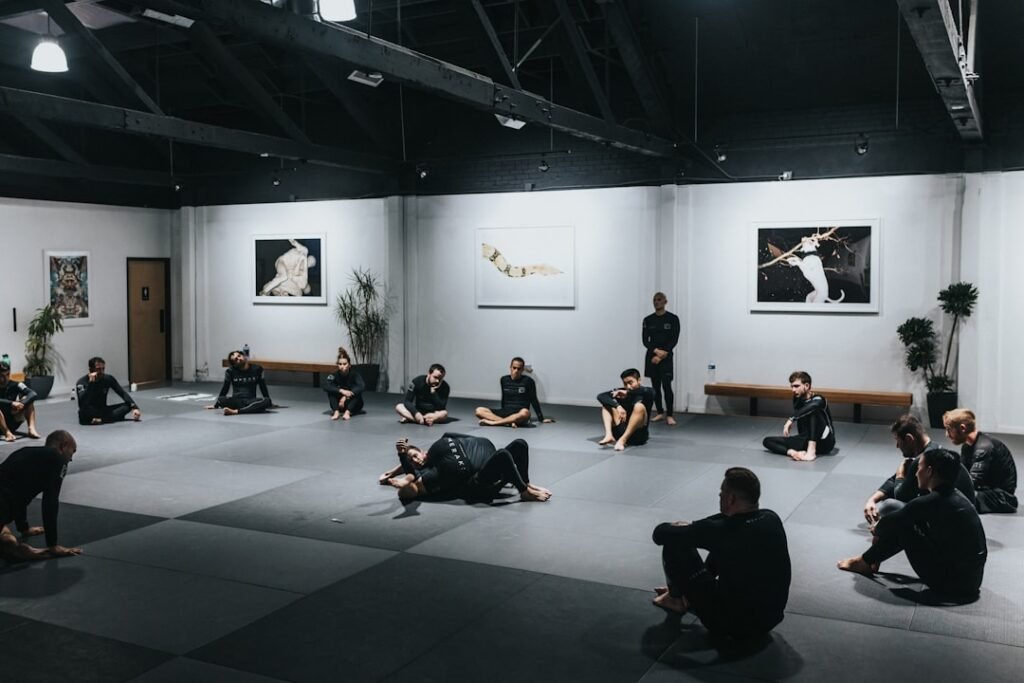In recent years, Oslo has witnessed a remarkable emergence of warrior-scholars, individuals who embody the dual spirit of martial prowess and intellectual curiosity. This phenomenon is not merely a trend; it reflects a deeper cultural shift towards the appreciation of holistic education that encompasses both physical discipline and mental acuity. The warrior-scholars of Oslo are not just practitioners of martial arts; they are also students of philosophy, history, and language, seeking to understand the broader context of their training.
This synthesis of mind and body is reminiscent of ancient traditions where the warrior was also a scholar, a concept that resonates deeply within the Norwegian capital. The rise of these warrior-scholars can be attributed to various factors, including the increasing popularity of martial arts and a growing interest in Eastern philosophies. As more individuals engage in disciplines such as Kung Fu, Tai Chi, and other forms of Chinese martial arts, they find themselves drawn to the rich cultural heritage that accompanies these practices.
This journey often leads them to explore the Chinese language, as understanding the terminology and concepts behind martial arts can significantly enhance their training experience. In Oslo, this fusion of martial arts and scholarship is creating a vibrant community that values both physical excellence and intellectual growth. Spaces are filling up fast! Register for Chinese classes at the LC Chinese School in Oslo today.
Table of Contents
ToggleSummary
- Warrior-scholars in Oslo are embracing Chinese language and martial arts, leading to a rise in their influence and presence in the city.
- Chinese martial arts have had a significant impact on the martial arts scene in Oslo, influencing training techniques and philosophies.
- Learning Chinese can benefit martial artists by providing access to traditional texts, enhancing understanding of techniques, and fostering cross-cultural connections.
- There is a strong connection between the Chinese language and martial arts, with language skills enhancing training and understanding of traditional techniques.
- Chinese martial arts hold cultural and historical significance, and their integration with language skills is shaping the future of martial arts in Oslo.
The Influence of Chinese Martial Arts in Oslo
Chinese martial arts have made a significant impact on the cultural landscape of Oslo, attracting practitioners from diverse backgrounds and age groups. The allure of these ancient fighting styles lies not only in their physical techniques but also in their philosophical underpinnings. Schools across the city have begun to incorporate traditional Chinese martial arts into their curricula, offering classes that range from the dynamic movements of Wing Chun to the graceful forms of Tai Chi.
This growing interest has fostered a sense of community among practitioners, who often share a common goal: to cultivate both their bodies and minds through the practice of martial arts. Moreover, the influence of Chinese martial arts extends beyond the dojo. As practitioners delve deeper into their training, they often find themselves exploring related aspects of Chinese culture, such as calligraphy, tea ceremonies, and traditional medicine.
This holistic approach enriches their understanding of martial arts and fosters a greater appreciation for the cultural heritage from which these practices originate. In Oslo, this cultural exchange is evident in various events and workshops that celebrate Chinese traditions, further solidifying the connection between martial arts and cultural exploration.
The Benefits of Learning Chinese for Martial Artists

For martial artists in Oslo, learning Chinese offers numerous advantages that extend beyond mere linguistic skills. Firstly, understanding the language allows practitioners to access a wealth of knowledge contained within classical texts and teachings. Many foundational concepts in martial arts are rooted in Chinese philosophy, and being able to read these texts in their original language can provide invaluable insights into techniques and strategies.
This deeper comprehension can lead to more effective training and a more profound connection to the art itself. Additionally, learning Chinese can enhance communication with instructors and fellow practitioners who may be native speakers or have a strong command of the language. This improved communication fosters a more cohesive training environment where ideas can be exchanged freely, leading to a richer learning experience.
Furthermore, as martial artists engage with the language, they often develop greater cultural sensitivity and awareness, which can enhance their overall practice. In Oslo, where diverse communities converge, this linguistic skill becomes an essential tool for building connections and fostering mutual respect among practitioners.
The Connection Between Chinese Language and Martial Arts
The relationship between the Chinese language and martial arts is deeply intertwined, with each influencing the other in profound ways. The terminology used in martial arts is steeped in historical significance, often reflecting philosophical concepts that are central to the practice. For instance, terms like “Qi” (energy) and “Yin-Yang” (the duality of opposites) are not only fundamental to understanding martial techniques but also encapsulate broader principles that govern life itself.
By learning the language, practitioners gain access to these concepts in their most authentic form, allowing for a more nuanced understanding of their training. Moreover, many martial arts forms are accompanied by specific movements that are named in Chinese, making language proficiency essential for mastering these techniques. The ability to understand instructions given in Chinese can significantly enhance a student’s ability to learn and execute complex forms accurately.
In Oslo’s training centres, instructors often emphasise the importance of language as part of their curriculum, recognising that fluency in Chinese can lead to a more immersive and effective training experience.
The Cultural and Historical Significance of Chinese Martial Arts
Chinese martial arts are not merely physical disciplines; they are rich with cultural and historical significance that dates back thousands of years. Originating from ancient China, these practices were developed not only for self-defence but also as a means of cultivating moral character and discipline. The historical context surrounding these arts is essential for understanding their evolution and relevance today.
In Oslo, practitioners are increasingly recognising the importance of this cultural heritage as they engage with martial arts. The historical narratives associated with various styles often reflect broader societal values and philosophies prevalent during their development. For example, many traditional forms emphasise respect for one’s teacher (Shifu) and the importance of humility in practice.
These values resonate strongly within Oslo’s multicultural environment, where respect for diverse traditions is paramount. By embracing the cultural significance of Chinese martial arts, practitioners in Oslo are not only preserving these ancient traditions but also contributing to a global dialogue about the importance of cultural heritage in contemporary society.
How Language Skills Enhance Martial Arts Training

Language skills play a crucial role in enhancing martial arts training by facilitating better communication between students and instructors. Instructors who speak both Norwegian and Chinese can provide explanations that bridge cultural gaps, ensuring that students grasp complex concepts more effectively. This bilingual approach allows for a richer exchange of ideas during training sessions, fostering an environment where questions can be asked freely and knowledge can be shared openly.
Furthermore, language proficiency enables students to engage with instructional materials that may not be available in Norwegian or English. Many classic texts on martial arts philosophy and technique are written in Chinese, and having the ability to read these works can deepen a student’s understanding of their practice. In Oslo’s martial arts community, there is a growing recognition that language skills are not just an academic pursuit but an integral part of becoming a well-rounded practitioner.
The Impact of Chinese Philosophy on Martial Arts in Oslo
Chinese philosophy has profoundly influenced martial arts practices around the world, including those found in Oslo. Concepts such as balance, harmony, and mindfulness are central to both philosophical teachings and martial techniques. As practitioners engage with these ideas, they often find that their training transcends physicality; it becomes a means of personal growth and self-discovery.
In this way, martial arts serve as a vehicle for exploring deeper philosophical questions about existence and purpose. In Oslo’s training centres, instructors frequently incorporate discussions on philosophy into their classes, encouraging students to reflect on how these concepts apply to their lives both inside and outside the dojo. This integration fosters a sense of community among practitioners who share similar values and aspirations.
As they explore the philosophical dimensions of their training together, they cultivate not only their physical skills but also their emotional intelligence and resilience.
The Role of Language in Understanding Traditional Chinese Martial Arts
Language plays an indispensable role in understanding traditional Chinese martial arts by providing access to the nuances embedded within these practices. Many traditional forms have specific terminologies that describe techniques, stances, and philosophies unique to each style. Without knowledge of the language, practitioners may miss out on critical aspects that define their art.
In Oslo’s diverse martial arts community, there is an increasing emphasis on learning Chinese as part of one’s training regimen. Moreover, understanding the language allows practitioners to connect with their instructors on a deeper level. Many experienced teachers draw upon their own cultural backgrounds when imparting knowledge about traditional practices.
By learning Chinese, students can engage more meaningfully with their instructors’ teachings and gain insights that might otherwise remain obscured by language barriers. This connection enriches the overall training experience and fosters a sense of belonging within the community.
The Integration of Chinese Language and Martial Arts in Oslo’s Training Centres
Oslo’s training centres are increasingly recognising the importance of integrating Chinese language instruction into their martial arts programmes. This innovative approach not only enhances students’ understanding of techniques but also fosters a greater appreciation for the cultural heritage associated with these practices. Many schools now offer dedicated language classes alongside martial arts training, creating an environment where students can immerse themselves fully in both disciplines.
This integration has proven beneficial for students at all levels—beginners gain foundational language skills while advanced practitioners deepen their understanding of complex concepts through language study. As students progress in both areas, they often find that their overall performance improves significantly; they become more attuned to the subtleties of movement and philosophy inherent in their practice. In this way, Oslo’s training centres are paving the way for a new generation of warrior-scholars who embody both physical excellence and intellectual curiosity.
The Importance of Cross-Cultural Understanding in Martial Arts
Cross-cultural understanding is vital in martial arts as it fosters respect for diverse traditions while promoting inclusivity within training environments. In Oslo’s multicultural landscape, practitioners come from various backgrounds, each bringing unique perspectives to their training experiences. By embracing cross-cultural dialogue, students can learn from one another while appreciating the rich tapestry of influences that shape their practice.
Moreover, cross-cultural understanding enhances collaboration among practitioners from different styles or schools. When individuals recognise the value inherent in each other’s traditions, they create opportunities for shared learning experiences that transcend geographical boundaries. In this way, Oslo’s martial arts community exemplifies how cross-cultural engagement can enrich personal growth while fostering unity among diverse groups.
The Future of Warrior-Scholars in Oslo: Embracing Chinese Language and Martial Arts
As Oslo continues to evolve as a hub for martial arts enthusiasts and scholars alike, the future looks promising for warrior-scholars who embrace both Chinese language and martial arts training. With an increasing number of schools offering integrated programmes that combine physical practice with linguistic education, students are well-positioned to cultivate holistic skills that will serve them throughout their lives. The commitment to fostering this duality will undoubtedly lead to a new generation of practitioners who not only excel in their physical abilities but also possess a deep understanding of the cultural heritage behind their art forms.
As they navigate this journey together within Oslo’s vibrant community, these warrior-scholars will continue to inspire one another while contributing positively to society at large—embodying the true spirit of what it means to be both a warrior and a scholar in today’s world. In conclusion, the LC Chinese School in Oslo stands out as an exemplary institution dedicated to nurturing this unique blend of skills among its students. By offering comprehensive courses tailored specifically for those interested in martial arts alongside language instruction, LC Chinese School plays an instrumental role in shaping future generations who will carry forward this rich tradition with pride and purpose.







